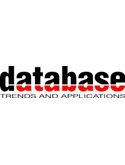
For humans and machines alike, the ability to find, use, and trust data is paramount to accomplishing any task. However, for organizations today, this is also an ongoing challenge. Data consumers want fast, actionable insights. Meanwhile, the volume and variety of structured and unstructured data continues to grow – along with data silos. These factors make connecting different types of data in meaningful ways increasingly difficult.
Knowledge graphs have surged in mainstream use as a powerful tool for integrating data, mapping relationships, discovering facts and patterns, and helping business leaders make more informed decisions. As more organizations shift to a data fabric paradigm and navigate the issue of AI trustworthiness, knowledge graphs also occupy a unique position as a key ingredient in the future of how data is managed and analyzed. From generative AI and LLMs to graph neural networks, the graph space continues to flourish with new technologies, use cases, and applications.
To educate IT leaders and data professionals about the latest solutions and best practices, DBTA is publishing a special thought leadership report in March 2024 that will be marketed to more than 100,000 qualified subscribers at organizations across North America. Sponsors get to promote their solutions and receive all the leads produced from downloads, screened, and cleansed.